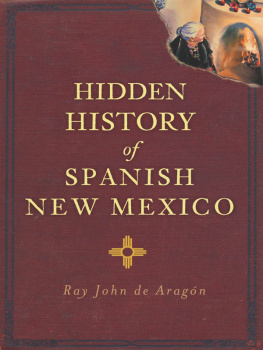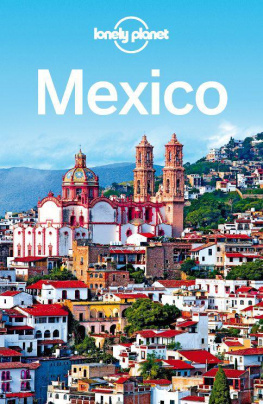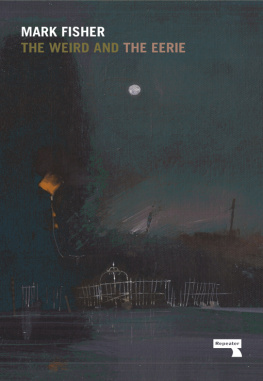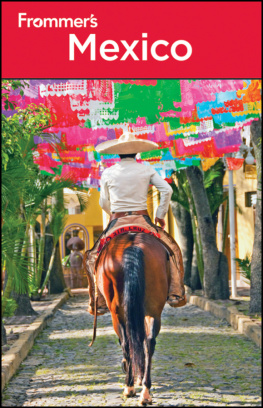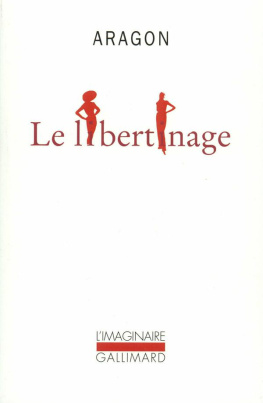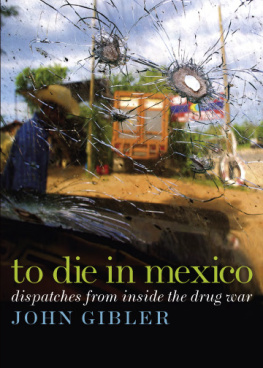Published by The History Press
Charleston, SC
www.historypress.com
Copyright 2020 by Ray John de Aragn
All rights reserved
Front cover seal illustration by Kari Ann Shultz. Unless otherwise noted, all images are from the authors collection.
First published 2020
E-Book edition 2020
ISBN 978.1.43967.118.4
Library of Congress Control Number: 2020941411
Print Edition ISBN 978.1.46714.594.7
Notice: The information in this book is true and complete to the best of our knowledge. It is offered without guarantee on the part of the author or The History Press. The author and The History Press disclaim all liability in connection with the use of this book.
All rights reserved. No part of this book may be reproduced or transmitted in any form whatsoever without prior written permission from the publisher except in the case of brief quotations embodied in critical articles and reviews.

DEDICATION AND MEMORIES
This book is dedicated to Fray Francisco Juan de Padilla, New Mexicos Spanish martyr who died around November 30, 1544. His remains, buried at the San Augustine de la Isleta Church at Isleta Pueblo, New Mexico, were discovered to be incorruptible. Religious pilgrims removed relics from the un-decaying body with its perfumed aroma. The faithful revered Fray de Padilla and prayed to him for miracles. A continuing mystery that still persists involved the rising of his coffin. The casket appeared periodically above ground, although it was always buried deep into the earth. In 1895, Father Antonin Jean Baptiste Docher (18521928), a French Franciscan Roman Catholic pastor at the church, credited touching the remains and praying to the fray for a miraculous medical cure he personally experienced. Doctors in Albuquerque were totally confounded by the Father Dochers complete and inexplicable recovery from a gangrenous limb that had to be removed to save the priests life. Docher found the wound that caused the frays deathwhile protecting peaceful Jumano Indians, a warring tribe killed himand he touched the wound. Father Docher investigated ancient claims by the Indians that the frays spirit would appear at night and travel around the pueblo. King Albert of Belgium and the queen sought the priest out and visited Isleta to learn more about Fray de Padilla. A papal legate, as an official envoy, also reported back to Pope Pius IX. Noted anthropologist Adolph Bandelier was a personal friend of Father Docher, and they both tracked leads into archaeological mysteries in and around Isleta. The Indians called Docher Tashide, which means little helper in Tewa. The full story of Fray de Padilla is in my book Hidden History of Spanish New Mexico.
A special dedication goes out to Sor Mara de Jess de Agreda, who, while serving as the mother superior of a convent in Spain, reportedly appeared through bilocation and ministered among the Jumano and other Indians in New Mexico. The Indians claimed the nun performed various miracles among them and spoke in their native tongues. The Roman Catholic Church has declared Sor Maria venerable, which leads to sainthood. This Spanish nun has often been proclaimed as New Mexicos saint. Pilgrimages to the sites of her appearances are scheduled annual events.
This book is also dedicated to my mother, Mara Cleofas Snchez de Aragn, who was born in 1915 in the village of Peasco Blanco in northern New Mexico. When I was a little boy, she would tell me strange but appealing stories about beliefs in the supernatural and end them by saying, Reclame a todos los santos. I called on all of the saints she told me to save me, bless me and protect me. She firmly believed in mysterious powers and things that are unknown or beyond our human comprehension. My mother also had faith that the divine could intercede on our behalf when there were no other rational explanations for things that could do us harm, and the holy spirits would be there for us. Coming from a rural and isolated Spanish colonial village that maintained its ancient roots stemming from the seventeenth century, my mother was able to pass this very rich cultural heritage on to me. What I learned and I personally experienced are between the pages of this unusual book, full of unexplained eerie mysteries of New Mexico.
On February 19, 1955, my first-grade teacher at Lew Wallace Elementary School in Albuquerque, New Mexico, died in a plane crash. Her name was Lois Dean. She was a passenger on TWA Flight 260. Everyone on board died when the airliner hit the cloud-shrouded crest at the Sandia Mountains east of Albuquerque. I was not only stunned but also devastated. Miss Dean always told our class to strive for the starsespecially so when she passed out clay to all of usand I immediately went to work. She asked what I was doing, and I answered I was making knights. She asked if I knew what that was, and I said yes. Another time she gave us brushes and paint. I painted a large crawling figure and told her it was a lobster. She was surprised by the high level of the work and praised it immensely. We all called her Miss Green rather than Dean. She always smiled. I have never forgotten her. This teacher strived to have us use our creative energies and our imagination. Her untimely death touched the entire school. We recounted what she meant to us as her former first graders during a memorial at the school. She lived on in my early dreams, always teaching me.
In fifth grade, Nellie F. Stein challenged us in spectacular ways. She had us doing timelines from ancient history up to World War II. We studied world and U.S. geography and contacted chambers of commerce all over the country. We reported what we learned about capital cities in class, wrote book reports each week and analyzed popular books. Each week, there were spell-offs. We all knew how to write correspondence letters, and we knew about the workings of our national American government. That year, Miss Stein asked what we wanted to be when we grew up. I answered I wanted to be an archaeologist and a writer.
As a university student, I went up with a group on the Tramway to the crest on the Sandia Mountains, to an elevation of 10,678 feet. A guide pointed out the area where the TWA crashed. We could see pieces of the airplane and belongings scattered around although this was many years after the crash, which made national and world news. He also showed us the general region of the Sandia Cave where remnants of prehistoric humans were found, and he talked about this major discovery. After reaching the top, I descended the mountains on a winding foot trail. I searched for old landmarks as I walked down. At the end of the day, I finally reached my car as the moon lit up my path. In memory of all of the teachers who strongly influenced my career as an educator, writer, artist and historian, I dedicate this work to them.
Historical Setting
AN ENCHANTED LAND AND CULTURE
Some years ago, a National Latino Museum showcasing the direct contributions of Hispanics to the history of the United States was proposed. This new museum was to be built in Washington, D.C. A commission to study Latino contributions to the history of the United States was appointed. The committee, which was composed of representatives from the Cuban, Puerto Rican, Dominican and Mexican communities, met at the National Hispanic Cultural Center in Albuquerque. Surprisingly, New Mexico Latinos were left out. Not purposely, but because other Hispanic groups knew nothing about the history of New Mexico and its vast contributions in making this country so great. Ignorance about the tremendous imprint of New Mexico on the very fiber of American history has been so prevalent that New Mexico is virtually ignored. New Mexico Latinos have been conveniently cast into the universal label of Mexican American. At some points, ironically, American writers have used this misnomer to describe all Latinos, no matter where they come from, calling all North Americans and South Americans Mexican.






